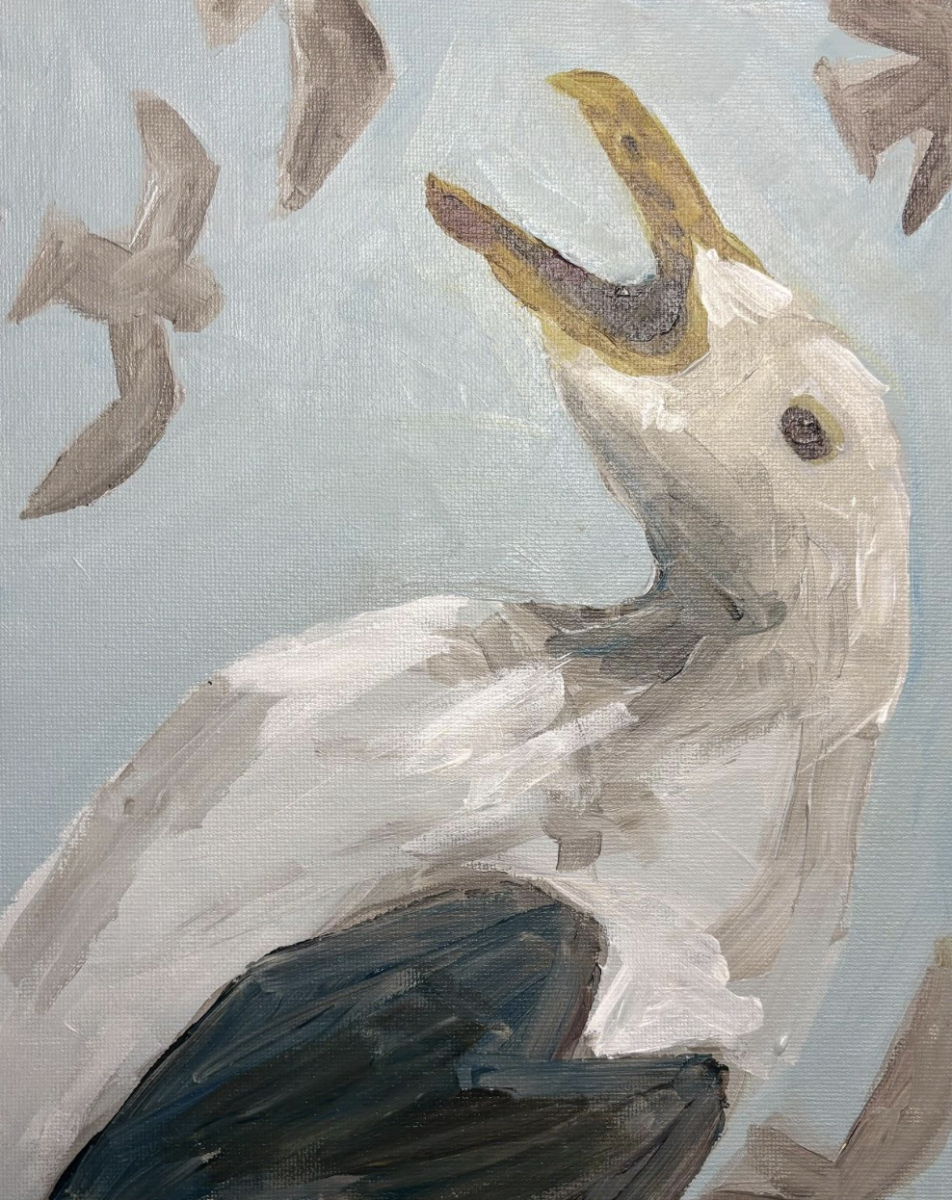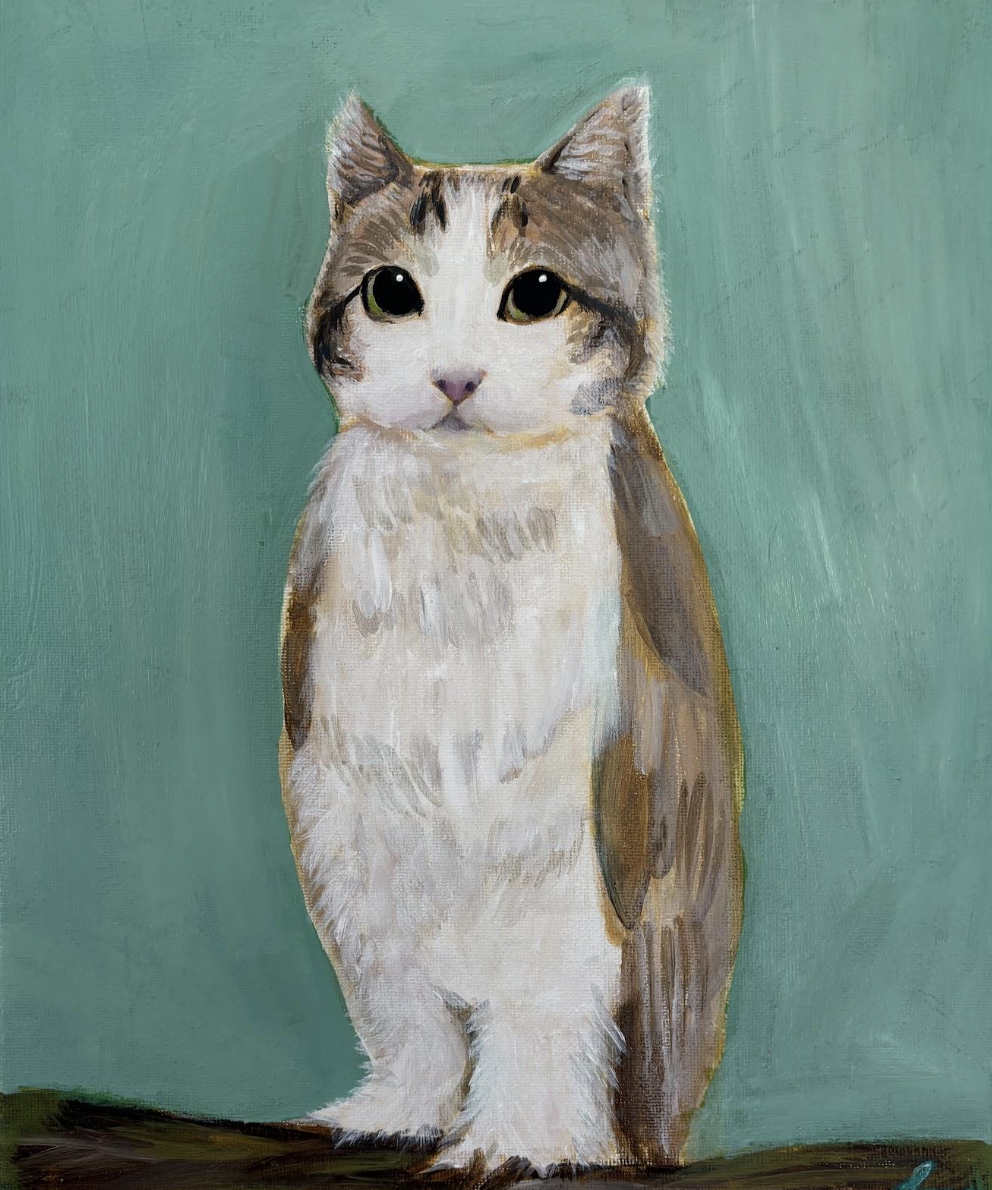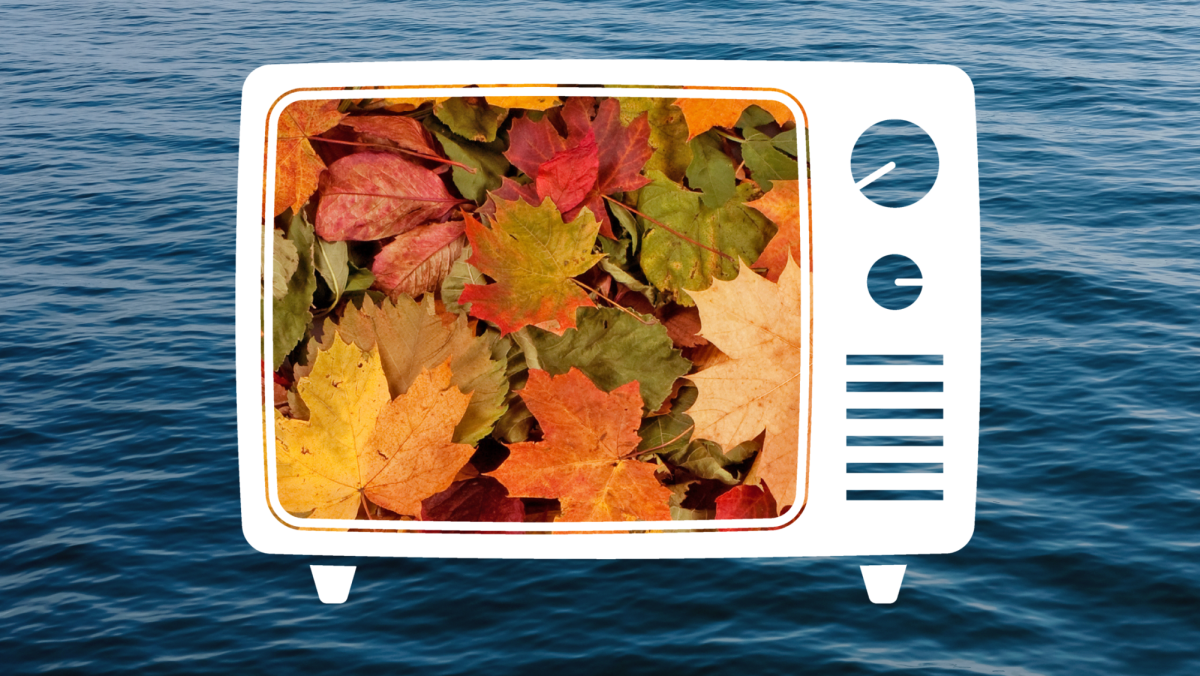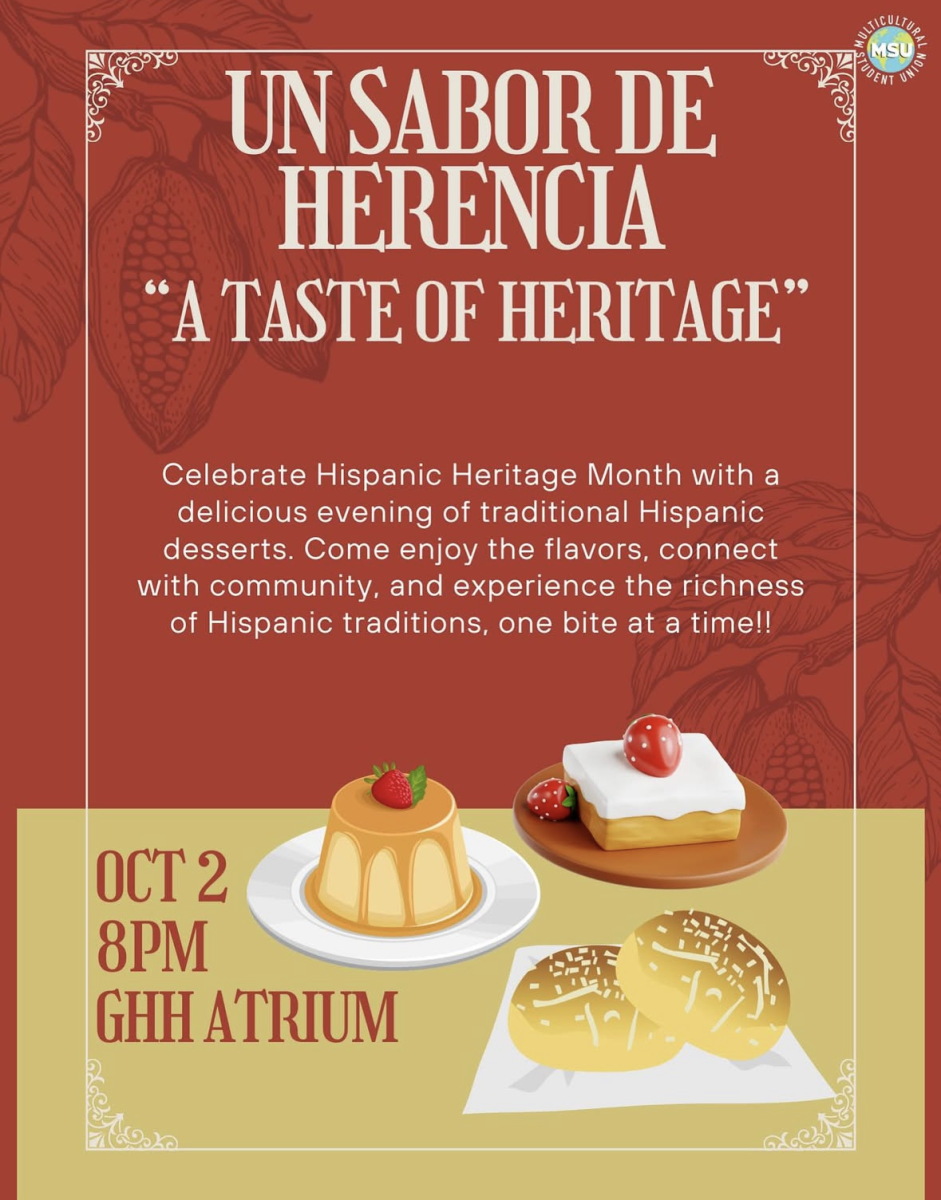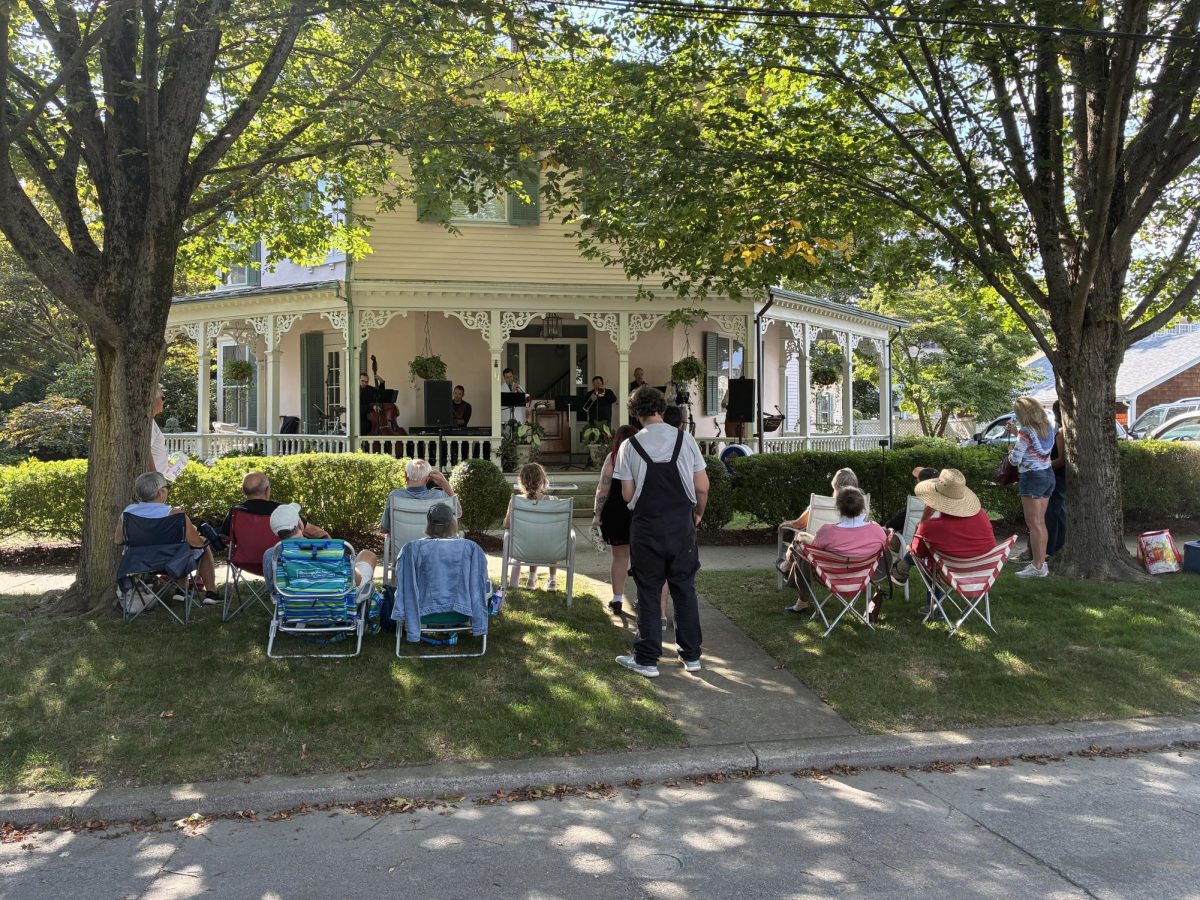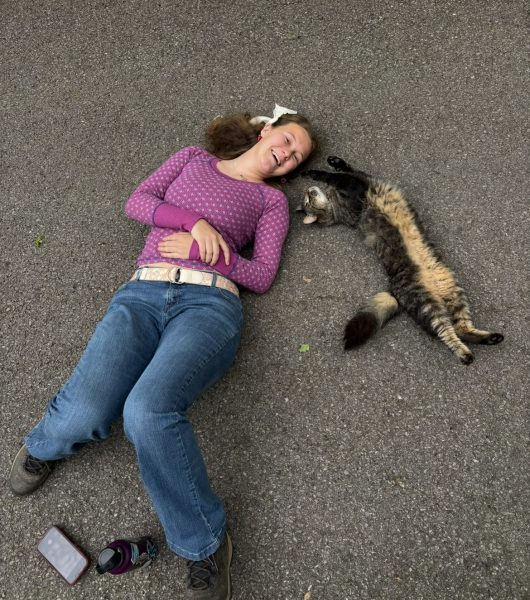On Monday, December 2nd, the Art Club celebrated the end of the semester with an exciting fundraiser. For $5, attendees enjoyed a creative evening filled with snacks, door prizes, and the opportunity to learn from RWU’s very own Professor Kevin Gilmore. The highlight of the night was a hands-on collage workshop that let participants unleash their inner artist while supporting the Art Club.
Ana Froekjaer, President of the RWU Art Club, shared that the idea for the collage night originally came from Professor Gilmore. “He suggested that we do a collage night inspired by Hannah Höch.”
German artist Hannah Höch was born in 1889. She was one of the first to create photomontage, a type of collage made by cutting and pasting real photos. Her work focused on themes of androgyny, political issues, and changing gender roles.
Gilmore, who identifies primarily as a painter, described collage as being the first medium that allowed him to think about composition. Unlike painting, you do not have to worry about the mechanics of mixing paint, what to paint on, or what to do with your brushes.
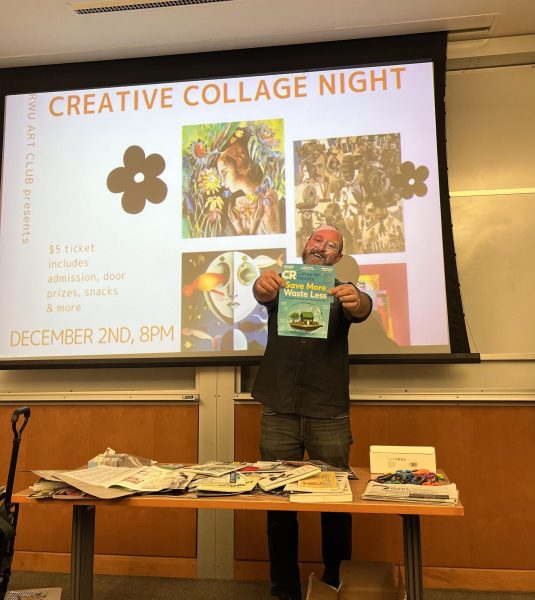
“Collage is instantaneous. You can start making it right away with just a glue stick and couple magazines,” said Gilmore.
For those hesitant to start, Gilmore’s advice was simple: “Hurry up and put some glue on it before you sneeze.”
Gilmore, who draws inspiration from collage artists like Kurt Schwitters, described Schwitters’ unique approach to collage. “(Schwitters) was digging in his pocket, grabbing a pack of matches or bus tickets or train tickets or receipts and just different printed material and arranging them together,” Gilmore explained.
Gilmore admires how Schwitters’ work conveyed meaning through the materials themselves, saying, “It tells a story because of what the materials are, as opposed to showing what the story is, because they were abstract.”
Before he started teaching at college, Gilmore remembers how people would often hesitate to commit to their pieces, constantly rearrange collage materials and never putting the glue down. “Eventually, you just got to go for it” says Gilmore.
One unexpected lesson Froekjaer took away from the workshop was the way paper tears differently depending on its grain. “Depending on which way you rip the paper, whether it’s horizontally or vertically, it’ll tear differently. You’ll see the white part underneath the paper, or if it’s colored, you’ll get a clearer, straighter line,” Froekjaer explained.
During the workshop, Gilmore talked about how he always brings a glue stick with him when traveling, especially to airports, because there is always an opportunity to make art, even if your only resources are a napkin and a plane ticket.
Professor Gilmore also discussed how collage exists in many forms beyond visual art, including music and media. He described sound collage as the process of borrowing and sampling music and repositioning it to make something new. Drawing a parallel to video production, he explained how videos can be workshopped, edited, and spliced together. “Films are collage,” Gilmore said. “I think it’s everywhere, we just got to look around and notice.”
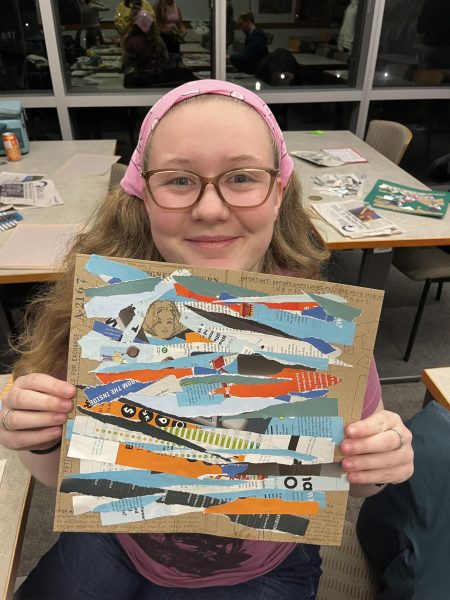
Froekjaer admitted that the event started out a bit rocky due to a lack of staff and the original plan to use the GHH Artium was not possible. As a result, the club had to relocate to a nearby classroom. “I think because of the location change, we had less of a turnout than we would have had originally,” said Froekjaer.
Despite the change in plans, the club was able to adapt and make the best of the situation. “Everyone that came had a really good time, and because there were fewer people than we originally thought, everyone was able to leave with a door prize, which I think is really cool,” Froekjaer added.
Ben Trovato, a junior at RWU and one of the participants, greatly benefited from Gilmore’s instruction. “The professor was there to help us learn about collage making, and his explanation was super interesting. It added a lot to my experience because I was able to create a collage that I never would have thought of before, had he not talked about it,” said Trovato. Reflecting on the night, he added, “I had a lot of fun at collage night.” Trovato’s experience highlights how the event not only sparked creativity but also allowed students to step outside their comfort zones and explore new artistic possibilities.
Reflecting on the event, Gilmore said, “Collage night was great. I think it did exactly what we needed to do, which is people who don’t necessarily have a wheelhouse of skills already are able to make work that pushes boundaries.” Looking ahead, he added, “I can’t wait to do it again.”
The night was a chance for students to try something new, learn from a collage expert, and support Art Club in the process. Despite some unexpected challenges, including a last-minute location change, the Art Club made the best of the situation, ensuring that everyone had a great time.


